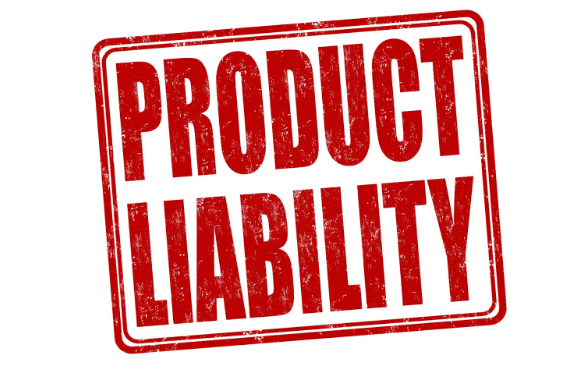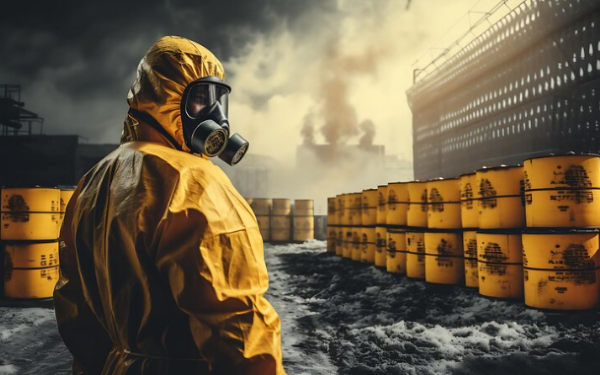How to Determine the Negligence of Manufacturers in Chemical Exposure Product Liability Cases
In our modern world, we are surrounded by a vast array of products, many of which contain chemicals that can potentially pose health risks if not handled properly. When individuals suffer harm due to exposure to hazardous chemicals in products, determining the negligence of manufacturers becomes crucial. Seeking justice and compensation through product liability lawsuits hinges on this determination.
In this article, we will explore actionable insights on how to determine the negligence of manufacturers in chemical exposure product liability cases. This empowers individuals with a better understanding of their legal rights and options.

Understanding Product Liability and Chemical Exposure
The product liability legislation obliges manufacturers to ensure the safety of their products and to provide appropriate warnings of potential risks. In the case of chemical exposure, it is often necessary to prove the manufacturer's negligence based on a failure to comply with these legal obligations.Common examples of chemical exposure cases include:
1. Toxic Substances in Consumer Products: Exposure to harmful chemicals in household items, cosmetics, or building materials.
2. Industrial and Occupational Exposures: Workplace exposures to hazardous chemicals, solvents, or other toxic substances.
3. Environmental Contamination: Exposure to toxic chemicals due to environmental pollution or spills.
Regardless of the specific circumstances, determining manufacturer negligence requires a thorough investigation and careful examination of the evidence.

Establishing the Duty of Care
The first step in proving the manufacturer's negligence is to demonstrate that the company owed the injured party a duty of care. This duty of care usually entails ensuring that their products are sufficiently safe for their intended use and that appropriate warnings and instructions are provided to mitigate potential risks.In the case of chemical exposure, manufacturers may have a higher duty of care due to the inherent risks associated with hazardous substances. Failure to comply with this obligation, such as insufficient testing or labeling, may constitute a breach of their legal obligations.
Identifying Breaches of Duty
As soon as the duty of care has been established, the next step is to identify specific cases where the manufacturer has infringed this duty. This may involve various forms of negligence, including:- Failure to Warn: Manufacturers may be liable if they fail to provide adequate warnings about the potential risks associated with their products, including chemical exposure hazards.
- Design Defects: In some cases, the product itself may be inherently dangerous or defective, exposing users to unnecessary chemical risks.
- Manufacturing Defects: Deviations from established manufacturing processes or quality control procedures can result in chemical contamination or increased exposure risks.
Uncovering such breaches often requires extensive investigation, testing, and analysis by experts in toxicology, industrial hygiene, and product safety.
Establishing Causation and Damages
Even if a breach of duty has been identified, it is necessary to establish a direct causal link between the exposure and the resulting harm or injury to prove manufacturer negligence in chemical exposure cases. This may be particularly difficult, since exposure to chemicals may have latent or long-term effects which cannot be attributed to a specific source.To demonstrate a causal relationship between chemical exposure and the plaintiff's injury or illness, expert medical evidence, epidemiological studies, and scientific evidence may be necessary. In addition, it is necessary to document the extent of the damage, including medical expenses, lost wages, and pain and suffering, to determine the appropriate compensation.
Building a Strong Case
To build a strong case, you'll need to take a comprehensive approach that covers all aspects of your chemical exposure product liability claim. This includes:Documenting your exposure to the chemical product:
Keep a detailed record of your exposure, including the date, time, location, duration, and any relevant details about the product's use. Also, document the product's name, label, instructions, warnings, and any marketing materials.Seeking medical attention and documenting your injuries:
Immediately seek medical attention if you've been exposed to a harmful chemical product. Document your injuries, including medical records, test results, treatments, medications, and any ongoing health issues.Gathering witness statements and testimony:
Identify anyone who witnessed your exposure or can testify to the harm caused by the chemical product. Gather their statements, testimony, and any relevant details to support your claim.Consulting with experts in the field:
Consult with an expert who specializes in product liability cases. Trust ConsumerShield, a legal advocacy group that connects you with experts in toxicology, chemistry, and other relevant fields that will help you create a case. These experts can provide valuable insights into the chemical product's composition, its potential risks, and the harm it causes.Collecting product evidence:
Preserve the chemical product and its packaging, as well as any related documents, such as instructions, warnings, marketing materials, and product labels.Reviewing industry standards and regulations:
Research industry standards and regulations related to the chemical product to determine if the manufacturer failed to meet their obligations and contributed to your exposure.Identifying similar cases:
Research similar cases involving the same chemical product or manufacturer to identify patterns, strengthen your claim, and demonstrate the manufacturer's negligence.By taking a thorough approach to building your case, you can increase your chances of success and hold the manufacturer accountable for their negligence.
FAQs
Can I hold a manufacturer liable if I was exposed to chemicals in the workplace?
Yes, manufacturers can be held liable for workplace chemical exposures if they failed to provide adequate warnings or safety instructions for their products, or if their products were defective and posed unreasonable risks to workers.What if the chemical exposure occurred years ago, but I'm only now experiencing health issues?
In some cases, chemical exposures can have long-term or latent effects, making it challenging to establish causation. However, with the help of medical experts and scientific evidence, it may still be possible to link your current health issues to past exposures and hold manufacturers accountable.How long do I have to file a chemical exposure product liability lawsuit?
The statute of limitations for product liability lawsuits can vary depending on your state and the specific circumstances of your case. It's crucial to consult with an experienced attorney as soon as possible to ensure you don't miss any critical deadlines.Conclusion
The determination of negligence in chemical exposure product liability cases requires a thorough understanding of the laws and regulations governing product liability. By investigating the conduct of the manufacturer, gathering evidence, and seeking legal advice, you can build a strong case and fight for the compensation you deserve.Remember! you don't have to go through this complex process alone, and you don't need the help of experienced lawyers who will guide you every step of the way.
Do You Need An Attorney?
If so, post a short summary of your legal needs to our site and let attorneys submit applications to fulfill those needs. No time wasted, no hassle, no confusion, no cost.

